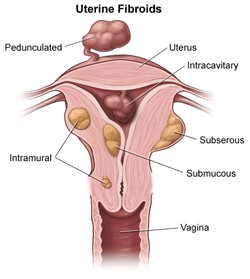Helping to Clarify the Common Confusion of Uterine Polyps vs Fibroids
Uterine polyps vs fibroids. Both manifest as growths in or around the uterus, both quite common in women, and both manifest symptomatically and asymptomatically. However, they are not the same gynecological condition! Here at Dr. Lona Sasser Obstetrics & Gynecology, we’ve helped and treated women with both types of conditions.
If you’re searching for more information on “uterine polyps vs fibroids” know that you are not alone! Because they are common, many women search for clarification. So here is some overview to help you understand the difference between uterine polyps and fibroids.
If you are in the Coral Springs area and would like to speak to one of our doctors, you can easily schedule an appointment online or call us: (954) 340-1050.
Uterine polyps are also called “endometrial polyps”
Uterine polyps are actually referred to as endometrial polyps. Why? Because they grow specifically in the uterus and are growths of endometrial tissue, which is the tissue that grows in the womb (the uterus).
Shape and formation
The polyps form when there is an overgrowth of the endometrial tissue. The growths are attached to the uterine walls and hang and extend into the cavity of the uterus. The shape of polyps is one of the easiest indicators of the difference between uterine polyps vs fibroids.
It is generally understood that they are more common in women who have already completely gone through menopause but can occur in younger women, as well.

Size
Uterine polyps can be small like a tiny seed or grow up to a few centimeters, even up to the size of a golf ball. In some cases they can slip through the cervix and into the vaginal canal, however, generally they are contained within the womb. When comparing uterine polyps and fibroids, they both have similar ranges in size.
Symptoms
Endometrial polyps can be asymptomatic in some people, however, symptoms are often common and can include:
- Irregular menstrual bleeding
- Bleeding between menstrual periods
- Excessively heavy menstrual periods
- Vaginal bleeding after menopause
- Infertility
Fibroids
Fibroids are growths that are found in and around the uterus and are not limited to only within the uterine cavity. Fibroids can grow within the cavity (uncommon), in the muscle of uterine walls (more common), and also on the outer part of the uterus pushing out into the pelvis (most common).
Generally, all fibroids are benign tumors, though there is a rare type of fibroid that is cancerous. Benign tumors do NOT become cancerous. Fibroids are also very common.
Shape
Since fibroids, unlike uterine polyps, are tumors they take on a different shape. They are made of smooth muscle and fibrous connective tissue.

https://www.uclahealth.org/fibroids/what-are-fibroids
Size
Fibroids can be small and unnoticeable or grow to be quite large.
Symptoms
It’s estimated that 70-80 percent of women will develop fibroids, but only some will experience symptoms or complications from them and will need gynecological attention. Symptoms can include:
- Heavy or prolonged periods
- Bleeding between periods
- Pelvic pain and pressure
- Frequent urination
- Low back pain
- Pain during intercourse
- Difficulty getting pregnant
So how do I know if I have uterine polyps vs fibroids?
An article like this comparing uterine polyps vs fibroids is only helpful in understanding the difference. However, the only way to diagnose whether or not you have uterine polyps or fibroids is through a medical exam.
If you live in the Coral Springs area in Florida, schedule an appointment with one of the top-rated gynecologists at Dr. Lona Sasser Obstetrics & Gynecology. We will make sure you get the screening and treatment you need.
Photo by Polina Zimmerman from Pexels

